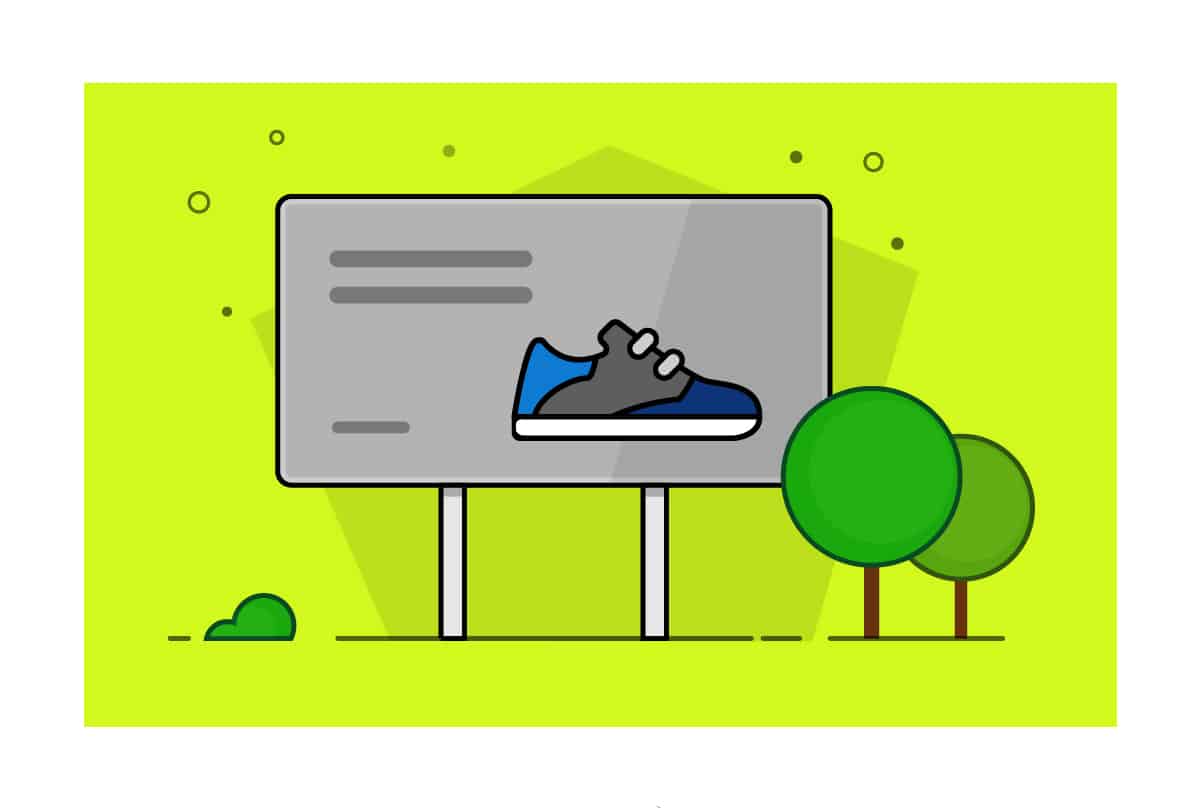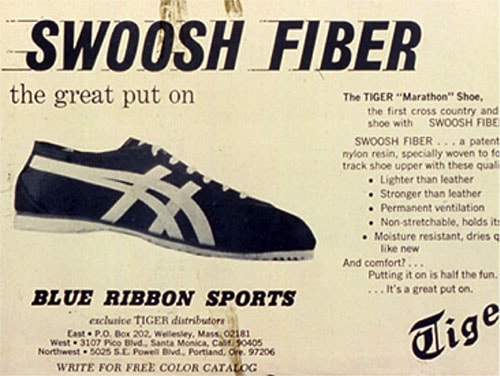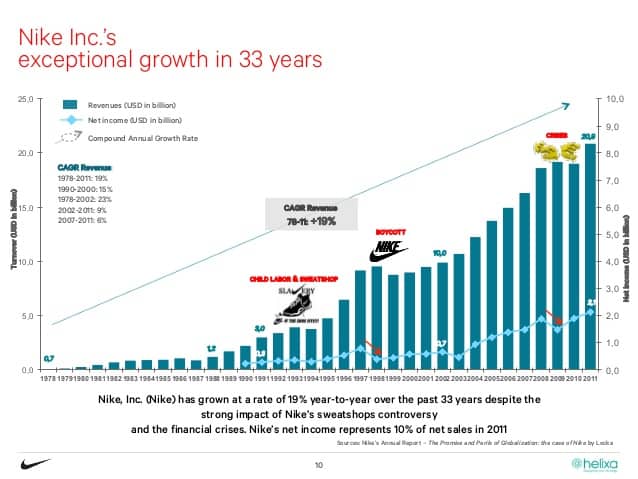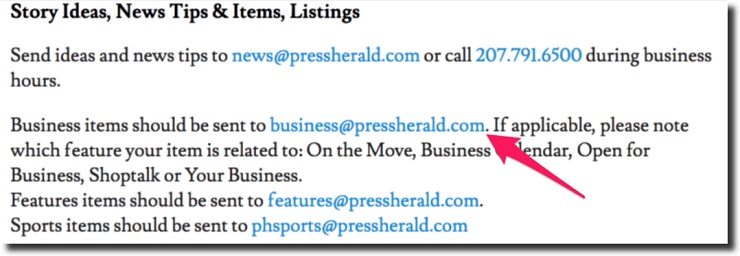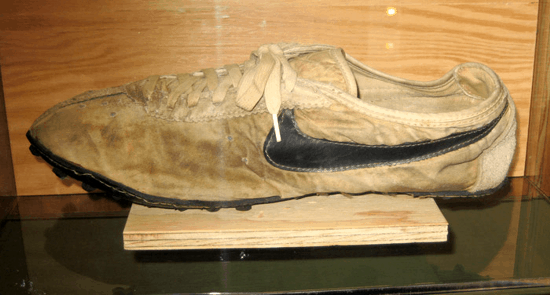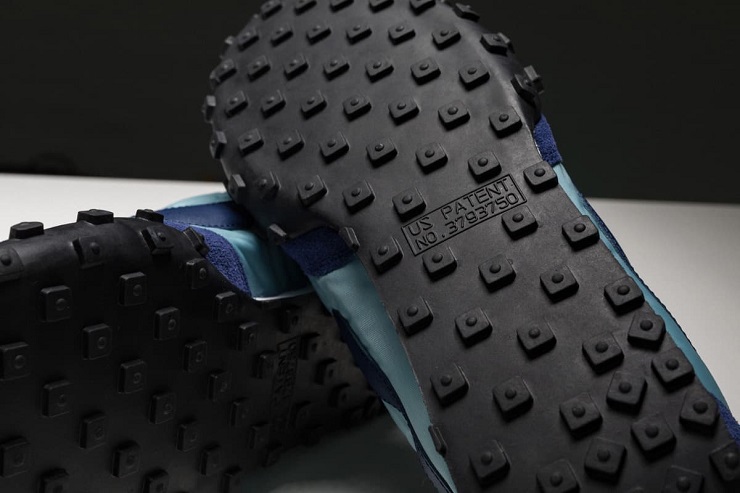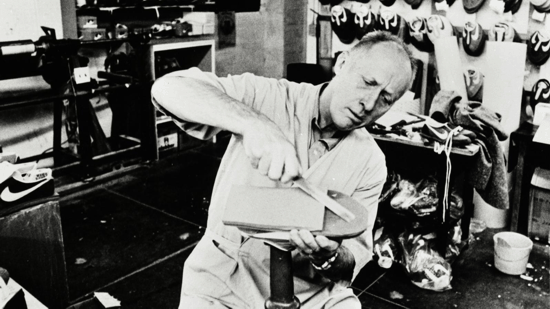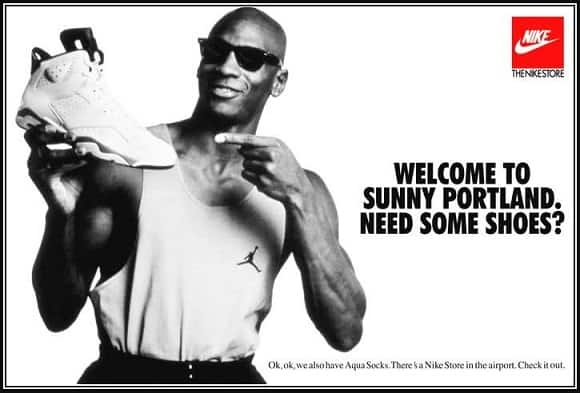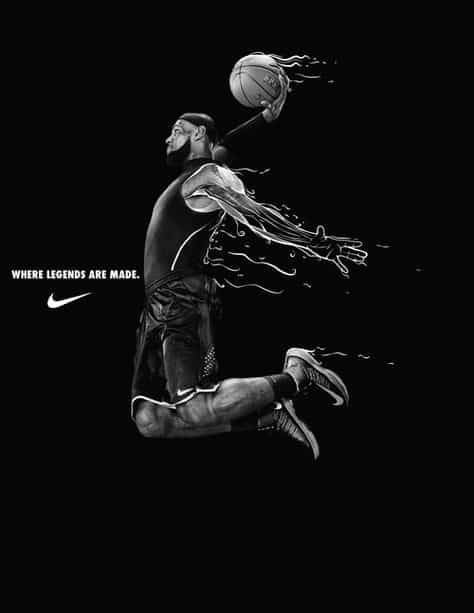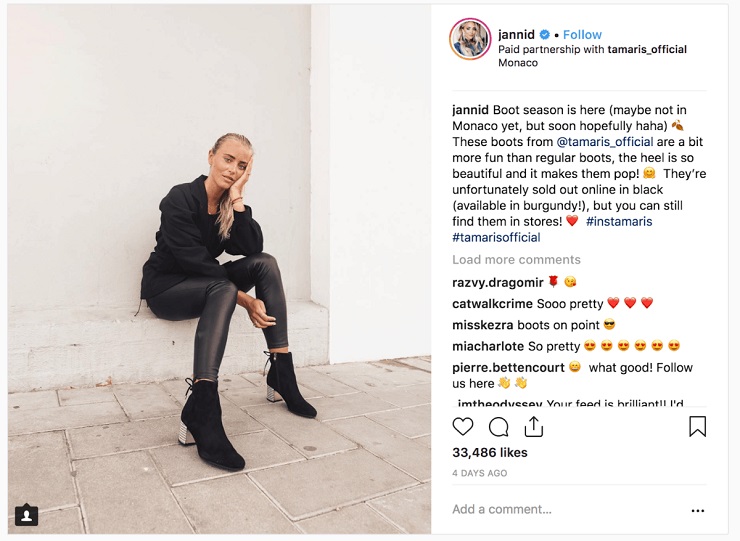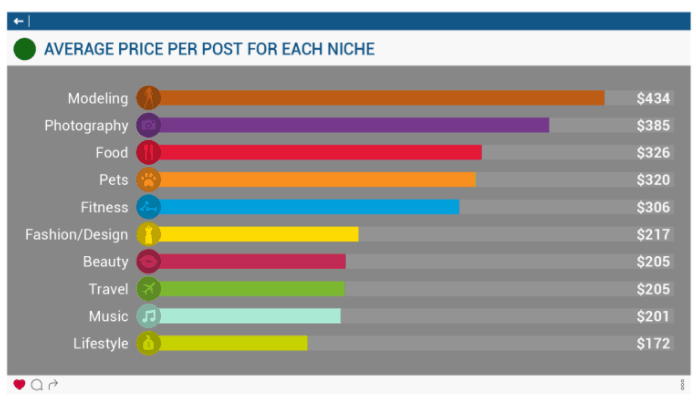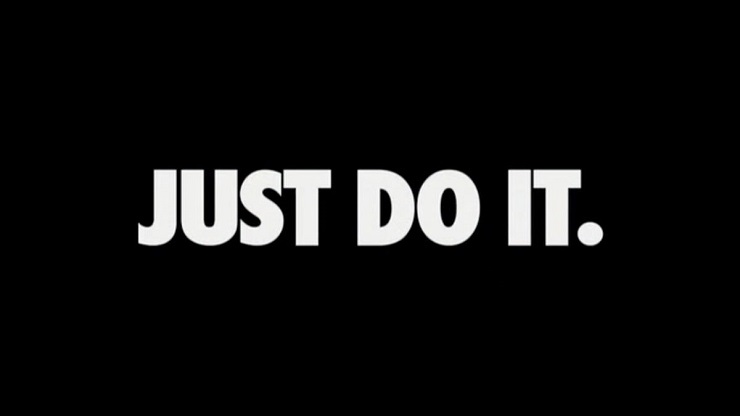Portland, the city of roses. Known for its lush greenery, mellow vibes, and hipster lifestyle, Portland also happens to be the place where a young accountant started one of the largest and most influential companies in the world.
I’m talking about Phil Knight, and the company he founded, Nike.
Nike currently boasts 73,000 employees worldwide, with factories in 42 countries, $34 billion in yearly revenue, and a market capitalization above $130 billion.
Phil Knight founded Nike on January 25, 1964, and in a few years, he took it from a small partnership reselling Japanese running shoes to the world’s largest footwear and apparel company—all while working two jobs, one as a CPA at Price Waterhouse and the other as an assistant professor of business administration at Portland State University.
Nike didn’t become as large as it is today by selling cheaper, better looking, and more effective running shoes.
Table of Contents
Strategy #1: The ‘Ask for Forgiveness, Not for Permission’ Mantra
Strategy #2: The ‘Hit the Road Jack’ Hack
Strategy #3: The ‘Sell to Weirdos’ Positioning Hack
Strategy #4: The ‘Partnership Made in Heaven’
Strategy #5: The ‘Michael Jordan of Advertising’ Hack
Strategy #6: The One-Sentence Marketing Tactic
Conclusion
The success of Nike lies in their business strategy, one any retailer—massive or tiny, online or offline—can copy and implement.
For this reason, we’ve analyzed the history of Nike and found six key marketing strategies that played an essential role in their growth.
What’s more, we’ve taken each of the company’s big successes and adapted them so an ecommerce store owner like you can apply them.
Nike Marketing Strategy #1: The ‘Ask for Forgiveness, Not for Permission’ Mantra that Allowed Phil Knight to Start Nike with Limited Capital
Phil Knight wasn’t born an entrepreneur.
The son of a local journalist, Knight was always a sports geek. In high school, he was an avid runner, a passion he kept up during his undergraduate studies at the University of Oregon (UO) in Eugene.
Naturally introverted, he fell in love with entrepreneurship during his graduate studies at the Stanford Graduate School of Business. After attending a class on small business, Knight discovered he was an entrepreneur.
In his fantastic autobiography Shoe Dog, Phil Knight recalled:
That class was an “aha!” moment. … Shallenberger defined the type of person who was an entrepreneur—and I realized he was talking to me. I remember after saying to myself: “This is really what I would like to do.”
While attending this class, Knight had an assignment: develop a business plan for a potential new company. He aptly called his paper, “Can Japanese Sports Shoes Do to German Sports Shoes What Japanese Cameras Did to German Cameras?”
Being a runner, I knew something about running shoes. Being a business buff, I knew that Japanese cameras had made deep cuts into the camera market, which had once been dominated by Germans. Thus, I argued in my paper that Japanese running shoes might do the same thing. The idea interested me, then inspired me, then captivated me. It seemed so obvious, so simple, so potentially huge.
Knight got an A. Then he took the assignment further than his classmates—it became a mission statement. From that moment on, Knight’s future was sealed: he would launch a company reselling Japanese running shoes.
I’d never really stopped thinking about that paper. Through the rest of my time at Stanford, through every morning run and right up to that moment in the TV nook, I’d pondered going to Japan, finding a shoe company, pitching them my Crazy Idea, in the hopes that they’d have a more enthusiastic reaction than my classmates, that they’d want to partner with a shy, pale, rail-thin kid from sleepy Oregon.
After graduating from Stanford, he got his father to pay for a tour around the world, a trip that would take him to places like Delhi, Cairo, Athens (where he’d meet the goddess who’d inspire the name of his company), and Paris. A self-discovery trip, undoubtedly, but also a business trip that would kick start his career.
What was the first stop of his journey? Japan, where he worked to convince a Japanese company to work with him reselling their shoes.
Soon after he landed in the impressive, but still recovering Tokyo (remember, this was not more than 20 years after World War 2), he traveled to the former imperial capital Kobe, where he’d meet people from Onitsuka, a leading shoe company.
Against all odds, without a real company or almost any capital, experience, or partners at his side, he struck a deal. He’d have the exclusive rights to sell Onitsuka shoes on the West Coast of the United States.
An ad from Blue Ribbon Sports selling Onitsuka shoes in the 60’s
He had the passion. He had the knowledge to sell the shoes. He simply lacked one thing: money.
Because he was just starting his professional life after his trip, Knight lacked any capital to fund his business. That didn’t stop him, however. It merely pushed him to start small.
The first person to help him start his business was his father, William W. Knight, who to Phil Knight’s surprise, accepted the idea of funding his business.
Imagine yourself in Phil Knight’s shoes. It’s the 1960s, you’ve got little to show for your new business, and the options are quite limited considering the internet doesn’t exist. It was in these early stages that Nike developed a mantra:
Ask for forgiveness, not permission.
You might even say Knight’s early philosophy in starting Nike was something along the lines of, “Just do it.” The message any entrepreneur can take from these humble beginnings is to start in whatever way you can, using whatever you have. Don’t feel the need to do things the “correct way,” staying within the lines of what certain gurus or books tell you.
Mark Zuckerberg famously said “move fast and break things.” Forty years before him, Phil Knight might have said “run fast and start things.”
How to Get Started with Your Ecommerce Store (Even If You Lack Time, Money, or Connections)
Just like Phil Knight’s example illustrates, the first months of any ecommerce business can be the hardest and most crucial. You need money. You need time. You need a network.
But if you don’t have those things, what do you do? Here are five tasks that will help you overcome the hard times and get started on the right foot (no pun intended).
Use the FFFs (Friends, Family, and Fools)
There’s an old saying in the business world that when you want to get your first round of funding, you should ask the three Fs, your friends, family, and fools (i.e., anyone who’s willing to give you money).
Instead of risking your own money from the start, getting financial help from other people who know, trust, and like you will help you get started.
Unlike a bank or an angel fund, the main benefit of using the FFFs is that you don’t need to develop any formal business plan. You simply pitch them based on your passion and vision.
To tap your FFFs, think about any family member or friend who’s wealthy and who you think would be willing to give you money.
Go to LinkedIn and look for other people in your network that could also give you money. For example, you could contact:
- Former bosses
- Business friends
- Former clients, whether that’s from a past job or agency
- Current clients
The main drawback of the FFFs is that they likely lack a large amount of funds themselves. That and the reason for their funding lies mostly in the trust they have in you—they basically want to see you get started. That only gets you so far.
If you ask multiple FFFs, however, you can get enough funds to get started on your first production run or wholesale order.
Use Online Business Funding Tools
The days of walking to your closest bank branch and asking for a loan are over. Most large banks don’t give loans to people without a functioning business, and even then, getting loans is hard. The exceptions are community banks and credit unions, but even they don’t provide the kind of service that fits an online ecommerce entrepreneur like you.
The perfect solution is using a non-bureaucratic lender like Fundera, Kabbage, or OnDeck to get financing quickly. What these companies have in common is that they allow entrepreneurs to get small business loans through an automated lending platform.
Instead of having to go through the lengthy and bureaucratic process of a traditional bank (which also require good credit and large collateral), these platforms have a qualification process with minimal paperwork, high approval rates, and often a turnaround of 24 hours or less. In exchange, these platforms have higher borrowing costs than banks.
The differences between these platforms is that they offer different loan amounts (Kabbage, for example, has a maximum loan amount of $250,000 whereas OnDeck offers up to $500,000), APRs, repayment terms, and the minimum qualifications.
What’s more, these platforms have easy-to-use apps and online dashboards that let you manage your loans from your mobile or desktop computer.
While you shouldn’t rely on these companies as your sole funding mechanism, they can help you expand your operations quickly, and if you keep an eye on your repayment terms, you will be able to grow faster than you would organically.
Use the Weekends and Mornings to Work on the Store
Americans spend almost eight hours in front of the TV and over four hours on their phones. If you think you lack time to start your store, you don’t. You lack focus.
The best way to get started is to leverage the mornings. According to Josh Davis, author of Two Awesome Hours, people who get up early in the morning have:
- More energy
- Fewer smaller decisions that dilute your focus
- More time to strategize
- More calm and fewer distractions (like TV and messages)
You don’t have to wake up at 3:45 a.m. like Tim Cook, but waking up an hour or two earlier than usual, can help you find the extra time to focus on your business.
For example, if you generally wake up at 8 a.m. to be at your job at 9 a.m., waking up at 6.30 a.m. would provide you a large enough chunk of time to work on your ecommerce store.
To develop the habit of early rising, start by going to bed half an hour before your usual time. Slowly, this half an hour will compound to more time, eventually going to bed an hour or two before your regular bedtime. It’s true that you’re losing time at the end of your day, but we typically spend those nightly hours doing things like watching TV or goofing around online.
Another tip is to turn off your computer at least a couple of hours before going to bed. The blue light from the screens of computers and mobile phones can mess with your sleeping patterns (also known as circadian rhythm). While using the “Night Shift” option on your phone plus an app like F.lux can help reduce the impact of the blue light, it’s better to stop using any electronic devices way before you go to bed.
Another way to squeeze more time into your ecommerce business strategy is using the weekends. Sure, you may miss your 50th Seinfeld rerun, but you’ll have more time to build your future. I’m not suggesting you should miss all your friends’ birthdays and family gatherings; instead, you should prioritize your weekend time more efficiently.
For example, if you spend four hours every Saturday and Sunday working on a marketing strategy for your ecommerce business, you will have worked a full day of a regular working weekday.
Ask for Help
Socrates supposedly said, “The only thing I know is that I know nothing,” and this couldn’t be more relevant to an entrepreneur like you (no offense).
You don’t know—nor should expect to know—everything. That’s perfectly fine.
When you feel lost, instead of feeling sad or disappointed, ask for help. Going to a Facebook group—like the one we have—and asking for help is a start, but it takes much more effort to get the answers you need from people who know what they’re talking about.
If you need help, you can:
- Go to events to meet other people who experience your problems. Use Eventbrite and Facebook to find new events in your area.
- Get into a mastermind group. The popularity of such groups lies in the fact that it’s effective to learn with other people who are at your same stage. Make sure the people in the group are optimistic, helpful, and get things done.
- Enter relevant Facebook groups. Participate, engage with the group, and slowly start asking for help as you deem necessary.
- Use Reddit. While the advice isn’t necessarily the best, some experts do like showing up in there and help beginners.
- Send emails to experts, even if they are way out of your league. Just like our CEO Nathan Chan got Richard Branson’s attention, you too can get help from smarter and more experienced people than you.
- Go to Clarity.fm and call an expert. It’s expensive, but it’s totally worth the investment if it means you can connect with successful entrepreneurs.
- Finally, remember that Google is your friend. Whatever problem or question you’ve ever had, someone else has already had it. Be sure to try it first when you run into a problem.
Nike Marketing Strategy #2: The ‘Hit the Road Jack’ Hack that Helped Phil Knight Generate Over $1B in 15 Years
The lemonade stand owner represents the epitome of the scrappy entrepreneur. It’s you versus the world. Standing behind a feeble facade, you sell what you made yourself—squeezed lemon juice with a little sugar.
In the early days of Nike (which back then was called Blue Ribbon), Phil Knight was the perfect example of a lemonade stand entrepreneur, but instead of selling juice, he sold Onitsuka’s shoes in his van at local running competitions.
After his first year in business, Phil Knight was able to sell $8,000 worth of shoes—$64,301 in today’s money. But he didn’t make that many sales by mere luck. Let’s remember this was in 1964—there were no Google Ads, Facebook Ads, or email marketing. He didn’t have any money to advertise in magazines, newspapers, or, god forbid, billboards.
He did what any entrepreneur in his position would do: get on the road and sell the shoes by hand.
My sales strategy was simple, and I thought rather brilliant. After being rejected by a couple of sporting goods stores (“Kid, what this world does not need is another track shoe!”), I drove all over the Pacific Northwest, to various track meets. Between races I’d chat up the coaches, the runners, the fans, and show them my wares. The response was always the same. I couldn’t write orders fast enough.
While he wasn’t living in a van down by the river, he still used his vehicle as the only way to sell to targeted customers. Better yet, it allowed him to build relationships with his customers, learning what models they liked, what problems they had, and who to trust when they needed running shoes.
Also, his costs were almost non-existent. Besides paying for gas, food, and the product, he didn’t have any other costs associated with his business.
Within 10 years, his company was generating over $1 billion in revenue, and on the path to replacing Adidas, Reebok, and Puma as the largest sports apparel brands.
Nowadays, people call it “hustle,” but Knight was doing it before it was cool. He did what he had to do to get started, and his actions paid off.
How to Hustle With Your Ecommerce Store
While you don’t need to use your van as your store, using a more direct approach can work wonders when you are getting started.
Getting face to face with your customers, talking to them to uncover their needs and problems, and building relationships is a surefire way of building a strong foundation for success.
Here’s are three unorthodox ideas you can use when you are launching your ecommerce store:
Launch a Pop-Up Store
When you are just getting started, it’s understandable that you don’t want to go through the pains of opening a brick-and-mortar store. You are an ecommerce entrepreneur for a reason, after all.
This doesn’t mean, however, you should reject offline retail altogether. You can launch a pop-up store, a temporary shop that works like a brick-and-mortar store without all of the costs associated with one. The costs depend a lot on the city, on the exact location you rent, and the space size, plus the time you want it to be open, which can be between three days and three months.
With a pop-up store, you can sell the same products you sell in your online store, while getting to know your customers, discovering the questions and doubts they have about your products, and picking up some sales.
Companies like Popup Shops and Storefront help businesses tap into the power of flash retailing, easily connecting brands with physical locations.
Use a Regional Trade Conference
Phil Knight may not have been able to go to the Sports Fitness Expo or even the Central Oregon Sportsmen’s Show—two of the largest national and regional sales trade conferences, neither of which existed back then—but he was able to create the same effect when he visited athletics events with his van.
A trade conference draws potential wholesale buyers for your company. Even if you aren’t thinking about selling wholesale yet, going to one can help you learn a lot about your industry, both from a vendor and exhibitor perspective.
Setting up can be costly, since you need to pay for a booth, your transportation, accommodation, branded materials, and any items you use to promote your company. While you can save on transportation costs if you participate in a trade conference where you live, the other costs are fixed and will demand an investment that can top the mid-five figures.
Still, The Tint shows it’s possible to save money if you plan out your costs, rent equipment, and set everything up yourself.
You can find a long list of regional events and trade conferences in 10times or in The Tradeshow Network.
Talk to Local Media
When you are first getting started, you’ll be dying to get featured in a site like Forbes or Inc. Despite all the benefits such a feature would entail, it’s much better to start with the local media than with national outlets.
The first reason local media makes sense is practical. The local press loves to talk about local businesses, so they’ll be more inclined to talk about your business than a national one.
Of course, just because you live in New York City doesn’t mean you will get mentioned in the New York Times, but smaller media outlets will be interested in you.
Another reason local media is great is because, it turns out, national or even international media companies pick up popular news from small, local sites. Ryan Holiday, author of Trust Me, I’m Lying, calls this process “trading up the chain.”
Once a regional or national media outlet sees a local outlet get publicity from a given story, the former are more likely to share it (scarily enough, as Holiday points out, without checking the facts deeply enough). An international site is likely to do the same with the news from a national one.
While there’s no way to guarantee your store will be mentioned in the Washington Post or CNN, by starting with a local media site, you still have a shot at trading up the chain to the big leagues.
Once you find the right outlet, pretty much every media site has a staff directory where they list their writers; go there and see who writes for the business section. This is an example from the Press Herald of Portland:
Also, look at the contact page to see if you can find anything on who to contact.
Finally, check for tips, if they have any, about how to pitch a story or contact journalists.
You can also use a service like HARO (Help a Reporter Out) to reverse the equation and get pitches from journalists who need quotes from business owners. While you need to wait some time to find a good opportunity, once you get one, you can often get mentioned in large sites, like Christopher Gimmer was able to get in Inc.
Additional Tips on How to Hustle With Your Ecommerce Business:
- Be resourceful and start with what you have. If you don’t even have money to buy a large stock of product, start as an affiliate of other people and grow it from there. In the meantime, you can build relationships with influencers, customers, and businesses.
- Think about what you can do today—without much capital available or people to help you—to launch your store quickly and efficiently. For example, you can try dropshipping or a partnership with a local business or manufacturer that accepts small initial orders.
Nike Marketing Strategy #3: The ‘Sell to Weirdos’ Positioning Hack
If you think about it, there’s nothing particularly unique about a running shoe. Nowadays, they are as common as a soy latte macchiato. But back in the day, there were no running shoes as we know them today, and running itself wasn’t nearly as popular.
There were a few companies that manufactured and sold training shoes, like Adidas (back then, the largest shoe company in the world) or Onitsuka, but their main focus wasn’t sports.
As Knight recollects in his memoir:
In 1965, running wasn’t even a sport. It wasn’t popular, it wasn’t unpopular—it just was. To go out for a three-mile run was something weirdos did, presumably to burn off manic energy. Running for pleasure, running for exercise, running for endorphins, running to live better and longer—these things were unheard of.
Selling to a small, weird niche is what helped an entrepreneur like Knight make a dent in what would eventually become a gigantic industry, position Nike as the best running apparel company, and allow it to grow as much as it did.
The revolution Nike unfolded upon the industry was due to the laser focus Phil Knight applied to its audience: runners.
All it takes is the right positioning. This is how you can do apply this lesson.
How to Position Your Ecommerce Store
Marketing starts in the mind of your customer. As Al Ries and Jack Trout, authors of Positioning: The Battle for Your Mind, explain:
Positioning is what you do to the mind of the prospect. That is, you position the product in the mind of the prospect.
Instead of inventing something out of thin air, a common misconception people have about marketers and advertisers, you need to take what’s in your audience’s mind and put your company in there.
It’s not nearly as hard as you may think. In the book Crossing the Chasm, Geoffrey Moore offers the following template for a positioning statement:
For (target customer) who (statement of the need or opportunity), the (product name) is a (product category) that (statement of key benefit – that is, compelling reason to buy). Unlike (primary competitive alternative), our product (statement of primary differentiation).
Take this positioning template and fill in the blank. For example, this is how it would look for Nike:
For runners who want comfortable running shoes that follow them on their path to greatness, the Nike Cortez (their first shoe under their name) is a running shoe that fits a runner’s lifestyle. Unlike Adidas and Onitsuka, our product is built precisely for running.
Such a statement would help you command your marketing, knowing what to highlight (comfortable running shoes), for what purpose (follow them on the path to greatness), and to whom (runners).
Additional Tips on How to Position Your Ecommerce Store and Find a Niche:
- Niche down, even if you think the result won’t be that popular. Focus on what your audience wants, not what you think will sell.
- Think about trends, but in the long term. While running was just gaining popularity, it was an activity some people already did, so it was rather easy to imagine it would continue as a trend.
Nike Marketing Strategy #4: The ‘Partnership Made in Heaven’ that Made Nike the Top Business in its Industry
These days, Nike stands on the shoulders of its amazing brand strength, but when it was getting started, it was just another small company with nothing but passion.
Things started to turn around for the company on January 25, 1964 in the Cosmopolitan Hotel in downtown Portland. The date will always be remembered as the day Knight partnered with Bill Bowerman, his former track coach at the University of Oregon.
Bowerman is known for training 31 Olympic athletes, 51 All Americans, and 12 American record-holders, among other top-level athletes. Having Bowerman at your side would be like having five-time Super Bowl-winning coach Bill Belichick as your partner in a football equipment company. Bowerman was not only an expert in training Olympic athletes, but he also helped build Nike into an innovative shoe company.
Working with Bowerman provided Knight with the social proof needed to get more attention from buyers. But what changed the future of Nike was a technological breakthrough Bowerman came up with.
One ordinary summer morning in 1971, Bowerman noted the gridded pattern of the family’s waffle iron. With some urethane (a synthetic foam material used to make running track) left in his garage, he tried building a sole that would have a much higher gripping power than a regular running shoe.
While his first few tests failed, he eventually got the formula right. Bowerman had invented the first waffler trainer, the foundation of the modern running shoe. Before this invention, athletic shoe soles were flat and closer to the ground, while the waffle-inspired sole had small knobs that gave the shoe extra grip and rebound, making it more effective for runners.
Thanks to this creation, Bowerman was eventually inducted in the National Inventors Hall of Fame, alongside Walt Disney, the Wright Brothers, and Thomas Edison.
Just as Steve Jobs and Steve Wozniak famously built the first Apple computers in the family garage, Bill Bowerman had built the ultimate shoe that would help Nike become the world’s largest shoe and sports apparel company.
Phil Knight remembers Bill Bowerman as:
Edison in Menlo Park, Da Vinci in Florence, Tesla in Wardenclyffe. Divinely inspired. I wonder if he knew, if he had any clue, that he was the Daedalus of sneakers, that he was making history, remaking an industry, transforming the way athletes would run and stop and jump for generations.
Bill Bowerman wasn’t just an inventor; he was a mentor. He helped Phil Knight grow both personally and professionally, launching both the man and the company into fame.
The relationship between Bowerman and Knight was the archetypal mentor-mentee relationships so many business people recognize as the cornerstone of their success.
Finding a mentor who can guide your entrepreneurial path is essential to the arduous journey ahead of you. Here’s how you can find and use a mentor in your business.
How to Find a Mentor
The reason you should consider getting a mentor is that working with someone more successful than you will help you learn faster, avoid mistakes, and have the accountability you need to get things done. Also, having someone unattached to your work give you feedback will help you get a clearer perspective and see what your business is missing.
Finding a mentor goes beyond asking a more successful person for mentorship. It’s a symbiotic relationship in which both the mentor and the mentee get equal benefits.
“A mentor is someone who sees more talent and ability within you, than you see in yourself, and helps bring it out of you.” – Bob Proctor
To start, think about your goals and what you’d need to achieve them. There’s nothing more frustrating for a mentor to give help to someone who’s not going to act on the advice given. Your mentor needs to be highly relevant to your path so you can maximize the chances of succeeding with their help.
For example, if you are trying to raise capital for your startup, you need to connect with someone who has raised several rounds before. On the other hand, if you are going through a massive hiring push, you need to find someone who has done something like that before (if not multiple times).
With a well-defined idea of what you need, check your network. If possible, you want to find someone you already know, which will make your work much easier.
For this step, use LinkedIn. Who’s in there that fits that previous attribute? Consider them as a potential mentor. If you want more information on how to find a trustworthy, successful mentor, check out our free ebook, The Ultimate Step-by-Step Guide to FInding a Mentor.
Finally, reach out. Your message should focus on getting a meal or coffee to discuss the situation you’re going through. Since you already know what this is, the potential mentor will be much more inclined to help.
When reaching out, you can use the following template:
Hey ,
It’s been a while since our last meeting.
Since our last meeting/chat, I’m currently .
Because you have , I was wondering, would you want to have some coffee to discuss ?
If you’re interested, would work for you? If not, I’m available .
Cheers,
In the meeting, don’t ask for mentorship. Rather, you build a relationship in which you gain help and guidance from a more experienced individual, and you give back in whatever way possible. If the potential mentor feels you need something, they’ll help you.
After you get out of the meeting, get back in touch with the results of whatever feedback you got. Mentors are successful, and thus, busy people. If you ask and forget to give back by sharing what you learned, the mentor will probably feel like they’re being taken advantage of. If you share what you learned, however, the mentor will feel an emotional attachment that will make your relationship much stronger, reinforcing the bond between both of you.
Additional Tips on Finding a Mentor:
- Partner with someone more experienced than you. The more specific and relevant their experience, the better.
- Look for more mentors as your business and needs grow.
- Remember to give back in whatever way possible. A mentor-mentee relationship is a two-way street.
Nike Marketing Strategy #5: The ‘Michael Jordan of Advertising’ Hack that Helped Nike Become the Top Sports Brand in the World
So far, we’ve been talking about the early life of Nike, when it was a small startup run by a geek and a world-class track-and-field coach.
By 1984, life had changed for Phil Knight. He was running an international behemoth, much closer to how we picture Nike today—popular, trendy, and innovative. But later that year, the reality of Nike was about to change even more.
In June 1984, the Chicago Bulls, a team that failed to qualify for the NBA playoffs, drafted a young promising athlete from Wilmington, North Carolina, Michael Jordan. Having won the Naismith and Wooden College Player of the Year, the two most important collegiate awards for basketball players, Jordan was considered a player with a bright future.
That same year, Nike launched the iconic Air Jordans, a shoe that even last year generated $3.1 billion in revenue, $100 million of which Michael Jordan rakes in from the brand royalties.
While Michael Jordan left professional basketball in 2003, the Jordan brand still dominates the retro basketball shoe market with a 65% share last year in the United States.
While Nike’s partnership with Jordan was one of the first and most successful ones they had, they continue to use the power of influencers to grow ecommerce sales.
Following Jordan’s success, Nike worked with LeBron James—considered by some as the greatest player after Jordan himself—to create an exclusive line of signature sneakers, which accounted for $300 million in sales in 2014 (the only available time frame sales were tracked).
The power behind the Air Jordans is that it taps into the popularity of Michael Jordan, the most popular basketball player of all time, and a worldwide sports icon.
Behind the Air Jordans’ success is the power of Michael Jordan as an influencer. As we’ve said many times before, an influencer marketing campaign can work wonders for any ecommerce business that wants to tap an existing and engaged audience to drive more sales.
Here’s how you too can find the Michael Jordan of your niche to grow your ecommerce store.
How to Use Influencers to Promote Your Store
In the simplest terms, an influencer is someone who has built a highly engaged following in a given topic or niche. The engagement an influencer builds with their audience can be measured in the number of comments, likes, or shares a given post gets.
What makes an influencer powerful for an ecommerce store owner is that their perceived authoritative status can persuade their followers to take action on a given offer.
To start using influencers to promote your store, your goal will be to find someone who has an engaged audience and is willing to promote your products to them.
There are many channels you could potentially consider using with your influencer marketing campaign, but to make things simple, we’ll focus on Instagram, a channel that has worked wonders for our community.
1. Find Influencers
There are three tools you can use to start finding influencers:
- Instagram (duh, I know)
- Iconosquare
- Ninja Outreach
While the first option is free and the most obvious, it will take you a lot of time to find the right influencers. For example, if you search for your industry’s influencers in the top bar, you will get results like this one:
You will have to go through a lot of irrelevant results to find an influencer, and even then, you will also have to manually analyze their engagement.
With Iconosquare and Ninja Outreach, you can enter your niche, location, audience engagement, and budget, to find the exact people to target. Costly, but time-saving.
As soon as you start searching for influencers, you will start to notice that those with the largest audiences have large budgets to work with.
If you are strained by a low budget (anywhere around or below $1,000), you can do as Dominique Jackson recommends and skip the large influencers in favor of the “micro-influencers,” people with a smaller yet highly targeted and active followings. Micro-influencers offer a good compromise because:
- They’re affordable
- Their audiences are more engaged since they’re more specific and close to the micro-influencer
- They can still produce impressive results
The question behind your decision to work with an influencer shouldn’t be their budget, however, but the level of relevance for your company and their audience engagement.
The relevance will depend on your company and your product. If you sell supplements for fitness athletes who follow the ketogenic diet, you want to work with an influencer who’s either a fitness athlete or someone who follows a keto diet. You may want to work with someone like Kayla Itsines given her 10.2 million-follower account, but she may not be your best choice for your store.
Focus on the engagement of an influencer, regardless of their following count. The number of followers doesn’t matter because what truly sets an influencer apart is the connection they have with their audience. If someone with 500 followers can get half of those people to buy from you just by mentioning your product, they have influence.
To find the engagement rate of an influencer, most Instagram analytics tools will automatically provide it. If you are going the manual way, however, you will have to go through at least 10 recent posts, take notes of the number of likes, shares, and comments, and plug them in the following formula:
multiplied by 100
For example, let’s say an influencer with 1,000 followers gets an average of 30 likes, 15 comments, and 10 shares for each post. In this case, their engagement rate would be:
* 100 = 5.5%
Make a list of at least 10 influencers with whom you’d like to work. Have a clear idea of why you want to work with them, so when you pitch them in the following step, you will have a much greater chance of success.
2. Contact an Influencer
The first step when contacting the influencer is to make a good first impression. Don’t hurry the process by asking for a shoutout in exchange for some money—influencers take pride in their job and their audience, so they won’t appreciate such transactional treatment.
Dominique Jackson, who we mentioned before, recommends using the following template for a first pitch:
Hi ,
I’m from . We’re huge fans of the motivational and inspirational content you post. It’s very aligned with our brand and the message we’re striving to put out.
We’d love to work with you. If you’re interested, let us know and we can set up a call!
Best,
This first contact is brief and concise. If it catches the influencer’s eye, you can set up a call or send an email with more information about your company, your product, and what you hope to get from it.
When it comes to paying, remember that what counts is the engagement rate and the size of the audience. The larger the audience and the higher the engagement, the more you should expect to pay.
Some micro-influencers, however, may be satisfied with a free partnership, so instead of asking for their prices right away (and potentially offending them), ask them how they manage their partnerships.
Repeat this process with all the influencers on your list, and after a few collaborations with them, you should start seeing an increase in sales.
Working with Michael Jordan is out of your reach, but the influencers you work with will help you reap impressive results.
Key lessons:
- Partner with influential people in your industry or niche to help you promote your store. Even if they’re not that famous yet (Michael Jordan had just started his professional career when Nike contracted with him), they can grow their influence along with your store.
- Make it a win-win for both parties. For the influencer, it’s a matter of sharing something cool their audience will like; for your business, it’s a matter of making sales.
Nike Marketing Strategy #6: The One-Sentence Marketing Tactic
Nike is known for more than their products. Actually, it’s mostly known for something that has nothing to do with its sneakers and more with its brand.
When you think about Nike, what does it come to your mind?
The logo—the “swoosh”—is one of the first things anyone associate with Nike.
The sponsorships and the product placements, like the Air Jordans, are also another big part of the brand they’ve built.
But there’s another thing that stands out.
It’s their tagline.
It’s short, catchy, and perfect for what their brand represents: a philosophy, or a way of living life.
The genius is in its simplicity and the emotions it conjures. Most importantly, its power resides in the way Nike has tied its brand messages (ads) with this idea.
The slogan was coined in 1988 at an advertising agency meeting. The founder of Wieden+Kennedy agency, Dan Wieden, actually credits the inspiration for the slogan to convicted murderer Gary Gilmore, whose last words before his execution were reportedly, “Let’s do it.”
Despite its morbid beginnings, the tagline has a certain simple beauty, and the “Just Do It” campaign allowed Nike to further increase its share of the North American domestic sport-shoe business from 18% to 43% (from $877 million to $9.2 billion in worldwide sales) between the years 1988 and 1998. With the help of the new campaign, Nike brand sales increased 1,000% over the next 10 years.
You too can create a simple but powerful tagline for your company. Here’s how you can do it (pun totally intended).
How to Develop a Powerful Tagline for Your Ecommerce Company
To create your tagline, you need to follow a four-step process:
- Explain your business value proposition, mission, and vision in a few sentences or paragraphs
- Trim them down to a few main ideas that best represent your company
- Trim them down to one sentence
- Trim it down to a few words
Finding the right tagline boils down to your positioning, as we explained before, but explains it in a more concise way.
Let’s imagine we wanted to develop a tagline for Foundr (we don’t have one—yet!). To start, we’d go to our About page, where we explain our identity, values, and mission in the following way:
Foundr is the go-to digital resource for the growing ranks of craft, self-made entrepreneurs – at every level of experience.
Our mission is to create a supportive, potent global community built on authenticity, limitless ambition and getting shit done. We want to see if we can help ten million entrepreneurs create 10 million ass-kicking businesses.
Foundr is a multifaceted digital business. We are independently published, with the muscle of a traditional media company, minus the corporate BS. We are lean, mean, and situated around the world.
This may seem like a lot, but before randomly trimming these paragraphs down into one sentence, it’s a much better idea to take the most important pieces out of them. This is what we get:
- We’re the go-to digital resource for self-made entrepreneurs
- We want to create a supportive, potent global community
- Our values are authenticity, ambition, and getting shit done
- We’re independently published
- We’re lean and remote
These points are too many and diverse to use all at once in a tagline, but they still summarize the previous paragraphs. Now it’s time to prioritize these points even further. What are the most important elements?
- Self-made entrepreneurs
- Supportive global community
- Authenticity, ambition, getting shit down
Still a lot, but much better. How could we recreate our brand with these ideas in mind? Some of the following sentences could work:
- A magazine for self-made entrepreneurs
- A supportive global community for self-made entrepreneurs
- A community for ambitious, self-made entrepreneurs
There’s clearly something powerful in all of these sentences, but they’re not quite a tagline yet. We need to make those taglines even more concise and powerful. With all this work done, we could consider some of the following taglines:
- Start your entrepreneurial path
- The community for ambitious entrepreneurs
- Learn. Start. Grow.
- Start it and grow it
- It’s time to start your business
All of these ideas can be modified even further, but they all represent two ideas:
- Starting and growing a business
- The entrepreneurial identity
Do we really want to focus on those two elements? Not necessarily, but these taglines represent those ideas. If we wanted to represent them, those taglines could work.
Now you need to get started with your own tagline. Grab a notepad (or your favorite note-taking app) and write down the mission and vision of your company, its value proposition, the audience it serves, and its identity.
Write down everything you can for about 30 minutes. Think of this process as a brainstorming session—no idea is a bad idea. Once you have everything in place, start trimming down, getting as close to your mission and identity as possible.
You won’t get a perfect tagline—perfection is a moving invisible monster that’s always a step away from you. With your tagline, you want to make your company clear to everyone, even yourself.
Your tagline will change the way your customers perceive your business. Take the time to create one and see what you come up with.
Lessons:
- Your tagline is the essence of your company or brand. Don’t make it too salesy (e.g., “Our products are the best”) but aspirational—it should represent what it wants to make your customers feel or become.
- At first, your tagline will not be perfect. But as your business grows and you get a deeper understanding about your company and audience, it will get better.
Conclusion
Phil Knight didn’t make Nike by selling fancy shoes. Remember, he had nothing—almost no money, no connections, no experience, nada. The only thing he had? Belief.
People, sensing my belief, wanted some of that belief for themselves. Belief, I decided. Belief is irresistible.
Whether you are just getting started or you want to scale to eight figures in sales, if you want to grow an ecommerce business, you need to believe in your product, in your company, and in your mission.
Believe, and get started.
